All ultra-enthusiasts will already know VR gloves, basically real “gloves” that allow you to interact with our gaming stations.
Currently, the most advanced VR gloves are either prototypes or intended for developers, but their origins go back a long way. Remember the mythical NES (Nintendo Entertainment System)?
Well. 6 years after its launch, the Japanese company (developed by Mattel, actually) offers an accessory for the console: the Power Glove.
 Nintendo PowerGlove, NES
Nintendo PowerGlove, NES
It was a fairly rudimentary gaming glove, derived from a very expensive prototype, which also saw the collaboration of Jaron Lanier, one of the pioneers of VR.
For about 100$ it was already possible to detect the bending of the fingers (thanks to the optical fiber filaments that captured the light intensity) and the position of the hand in space thanks to the microphones on the back of the glove (the ultrasonic motion sensors were supplied in the kit).
Unfortunately, only two titles were specifically developed for the Power Glove: Super Glove Ball e Bad Street Brawler. In reality, you could also have fun with Super Mario Bros (extending your fingers to fire, for example) or Rad Racer… and potentially with all those titles that were played by moving the pad. 54 “officially” supported titles of the time.
But despite the enthusiasm and technology, the Power Glove did not ensure real compatibility with NES titles of the time: rough, slow, and often incorrect controls.
In 2016, a project to cannibalize it – PowerGlove Ultra – was launched, based on Arduino.
This game glove was, Anywaythe progenitor of what will probably become a new class of gaming controller.
Apple recently decided to take a step in this direction, but we’ll see it at the end.
Let’s see some products instead A BIT’ more modern…
SPARCO HyperGrip: not real VR gloves… but comfortable
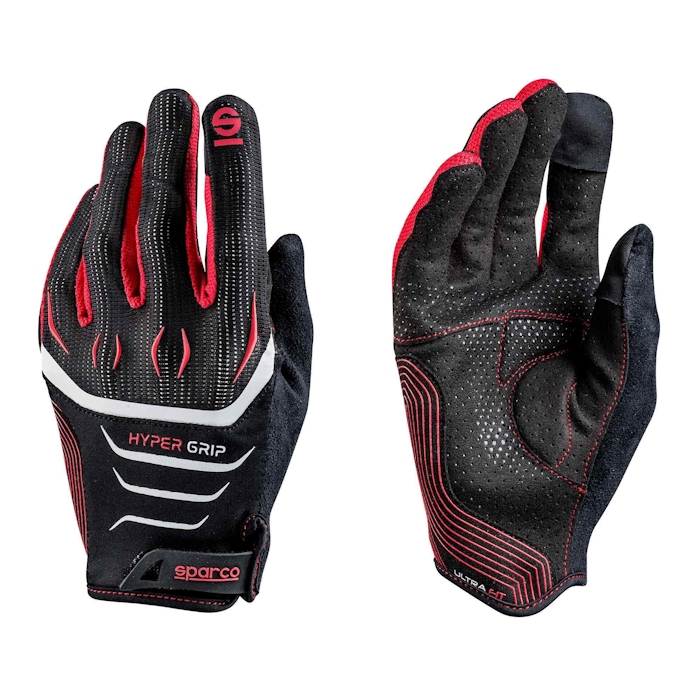 Sparco HyperGrip
Sparco HyperGrip
Let’s start with something whole Italian: simple “driving” gloves, with thumb and forefinger touch sensitive; they are not real gloves for VR configurable as a gaming peripheral proper, but the fingertips are removable to more comfortably press the keys of gaming peripherals… real.
Specifically aimed at Sim Racers and Gamers, they feature a micro-perforated microfiber palm, which also ensures excellent grip.
The back is made of a breathable and aesthetic composite material a little tamarraas befits the genre.
Manus Metagloves
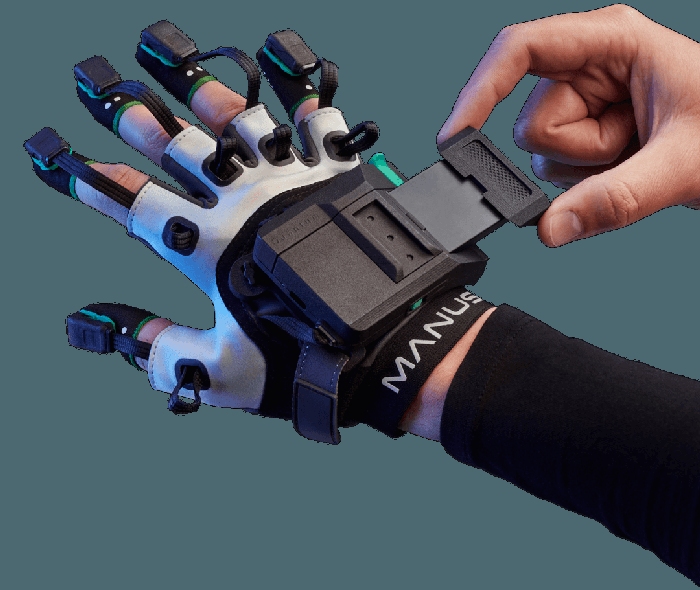 Manus Metagloves
Manus Metagloves
This VR glove looks like it’s from the future: wireless, patented Quantum Track technology with virtually no motion tracking sewing about the user and ability to create 3-D animations hyper-realistic. It is also possible to record your movement session, possibly modify it, and then export it via FBX file. VR Compatibility? Guaranteed.
Very rich kit, with also (in addition to the accessories to adapt them to any type of hand) a charging station that houses up to 6 battery. They can also be powered from an external source via the port USB-C. The battery is removable, of course.
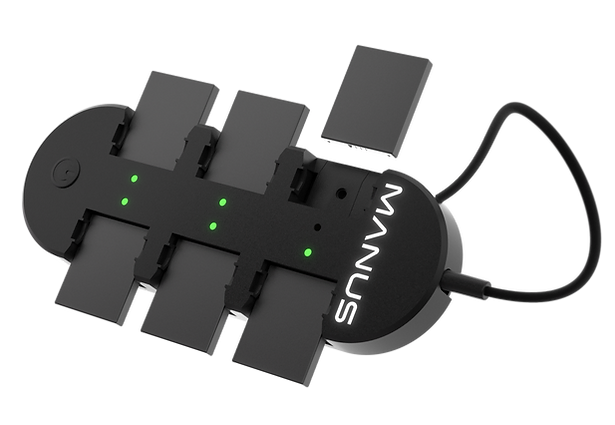 Manus charging station
Manus charging station
For now, think for developers, with version Plus ensure plugins for compatibility with, among others, Unity and Unreal Engine.
HaptX G1
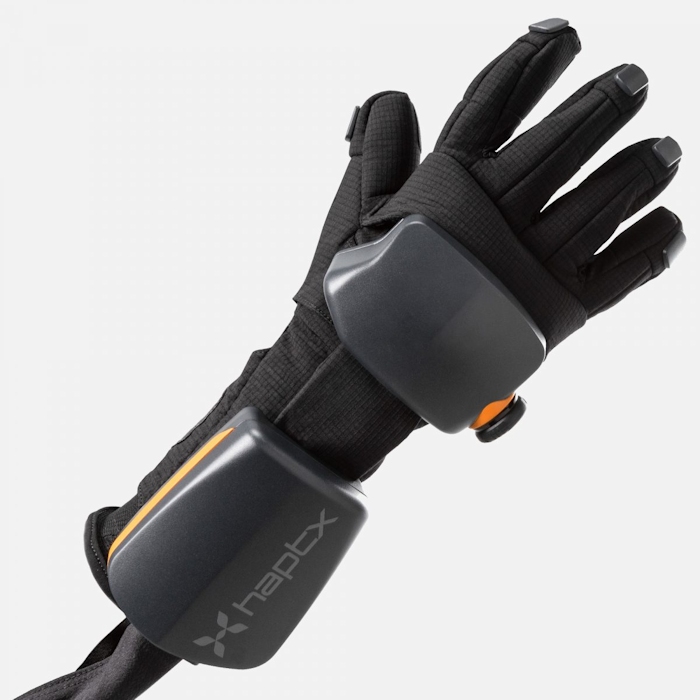 HaptX G1
HaptX G1
This technology for VR is a little different: in this DevKitdedicated microfluidic actuators move physically the skin thanks to a air flow controlled by a sort of wearable backpack-compressor, which guarantees haptic feedback: yes, they are somewhat bulky wireless VR gloves.
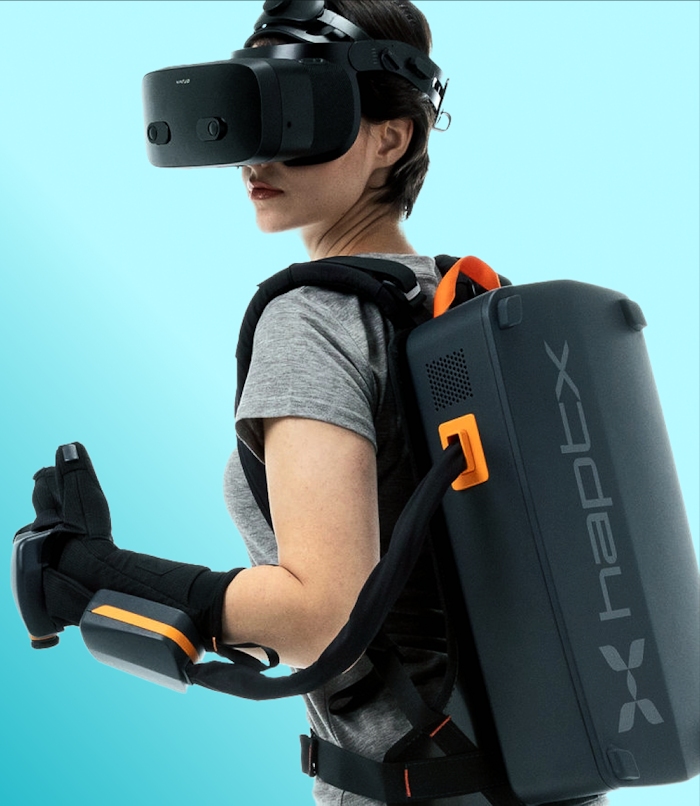 HaptX Airpack
HaptX Airpack
The system does not need power supply (autonomy of approx 3h) and allows the gloves to interact with virtual objects, maximizing the sensation of reality of the same with a haptic feedback that reaches 40 lb. You can’t play with them either, for now.
Orderable from 3Q 2023 and also compatible with Unity and Unreal Engine, with the ability to “dialogue” in VR con multiple users with the same device nearby.
TactGlove DK1: the truly wearable VR gloves
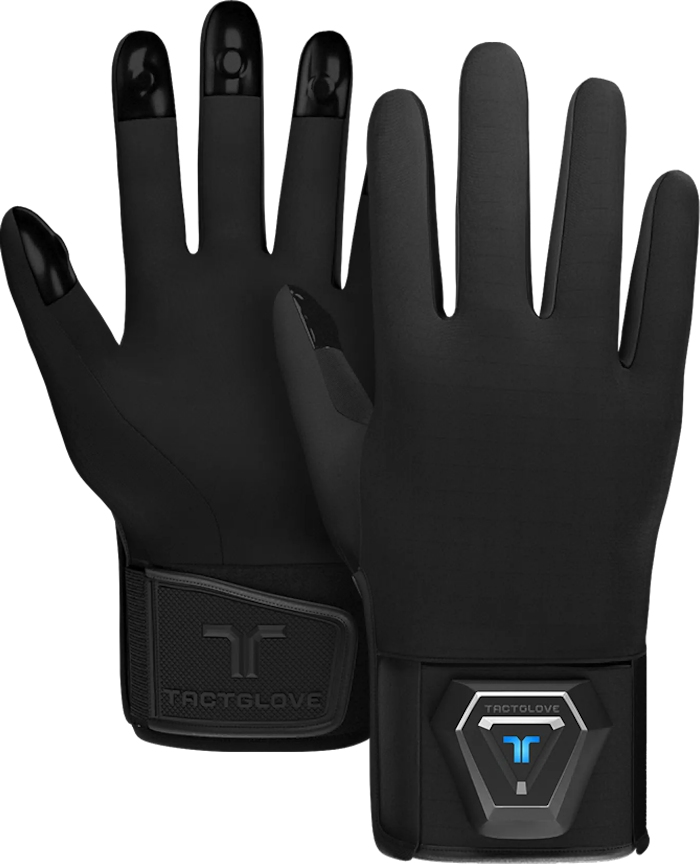 bHaptics TactGlove
bHaptics TactGlove
These bHaptics wireless VR gloves can be purchased as a kit with a total appetite…which is basically Batman’s armor!
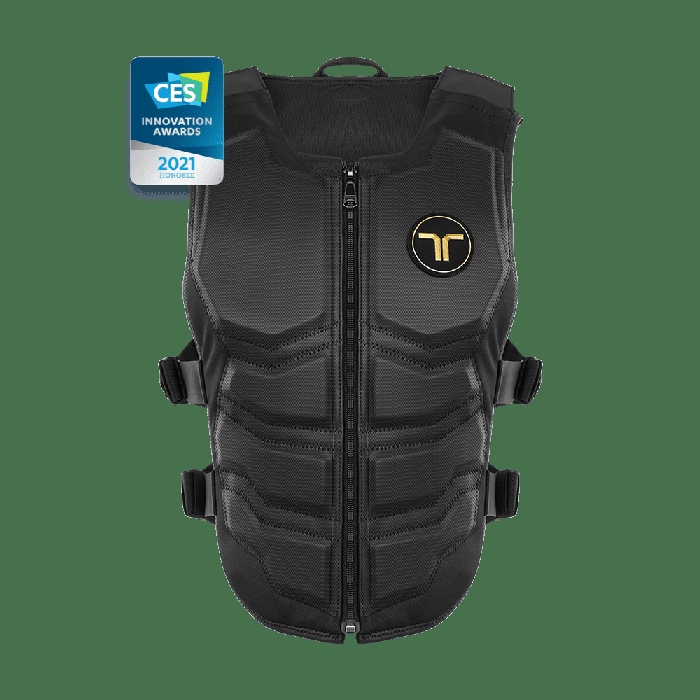 bHaptics TactSuit X40
bHaptics TactSuit X40
All completely wireless, they promise to suit both VR development and the gaming PCwith a declared autonomy of 3.5h.
A controllable Linear Resonant Actuator (LRA) is placed on each fingertip individually (via bHaptics SDK), which ensures linear and smooth feedback, also thanks to theneuromorphic algorithm owner that increases the spatial resolution.
TactGlove is compatible with good part of camera-based tracking systems, such as Meta Quest and Ultraleap’s Leap Motion, so it is potentially usable for gaming.
Wireless compatibility is ensured by the Bluetooth BLE module.
The peculiarity of these gloves, compared to the others, is that they are very little bulky… they almost look like normal sports gloves.
Peregrine VR Glove
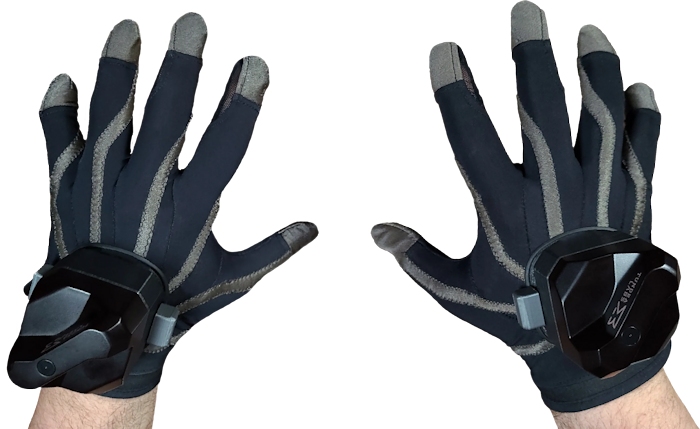 Peregrine VR Glove
Peregrine VR Glove
Lastly, let’s leave those who saw us long: Peregrine.
The company is currently developing the VR successor of the ancestor dated 2012 (Peregrine Glove, in fact).
Peregrine was born specifically as a glove gaming: adherent, programmable and with a connector smart, magnetic. The operation of the old glove, not yet for VR, was of the on/off type: touching the fingertips closed a contact (each contact is programmable) and received haptic feedback, as well as commanding the title/platform in turn. Everything was programmable from the dedicated Tool supplied in the kit.
The successor retains the fit and logic of the original Peregrine, but adds connectivity wireless and compatibility VR: Unreal and Unity Engine, HTC Vive and Vive Pro, Valve Index and Steam VR. Oculus not yet, Unfortunately.
The user can grab, throw, twist, pinch and touch objects in VR; it can also activate commands simply by touching the fingertips: when a fingertip makes contact with the thumb or palm, the touch is instantly detected and transformed into a button press/action. The controls can be easily customized for any Steam VR application using the included Tool, GloveBox.
The EMPA prototype: the novelty of the future
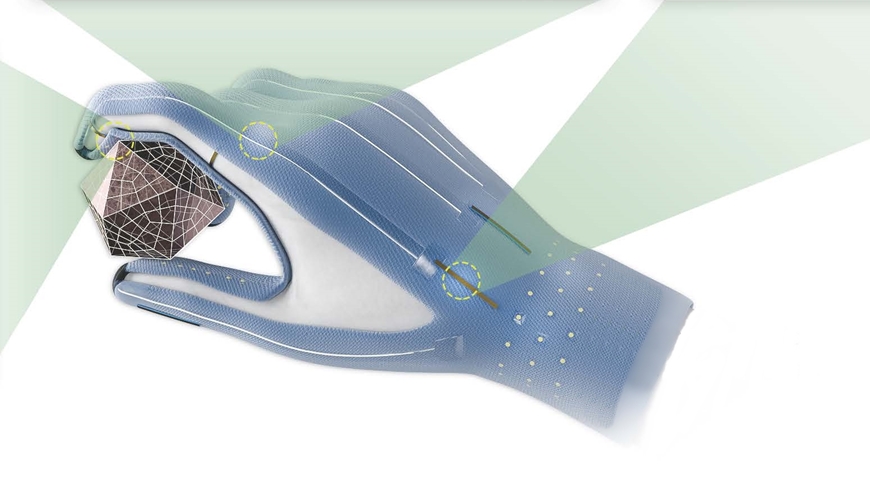 The VR glove prototype of the research team of EMPA (Zurich)
The VR glove prototype of the research team of EMPA (Zurich)
Together with colleagues from EPFL and ETH Zurich, an EMPA team is developing next-generation VR gloves, which will allow to adapt to the curves of each hand and to be printed largely in 3-D.
Well THREE, are the types of actuators integrated in this prototype:
- electrostatic amplified: bumps that can grow to replicate a specific texture of a surface
- brakes electrostatic: they stiffen the glove and hinder the movement of the joints
- elastomers dielectrics (DEA): tighten the outer skin of the glove so that it perfectly follows the profile of the hand, thanks to their property of contracting in the presence of an electric field
It is precisely the latter, the fulcrum of the EMPA research project: currently, the material is produced via a solvent-based chemical synthesis. The goal is to find a synthesis that can also be reproduced by a normal 3-D printer: a non-trivial goal, given that the polymer requires due component bases, superimposed for several layers on top of each other.
The advantage of these VR gloves, in addition to the “homemade” production, is also that of non have almost need energyas these polymers “absorb” it from our movements.
This would also benefit the reduced external dimensions.
…someone better known?
After this roundup of the state of the art of VR gloves, maybe again a hair too expensive, a small digression on Apple, which seems to have decided to start investing in this sector as well, recently registering a patent for gloves that interact with his system VR…












Leave a Reply
View Comments